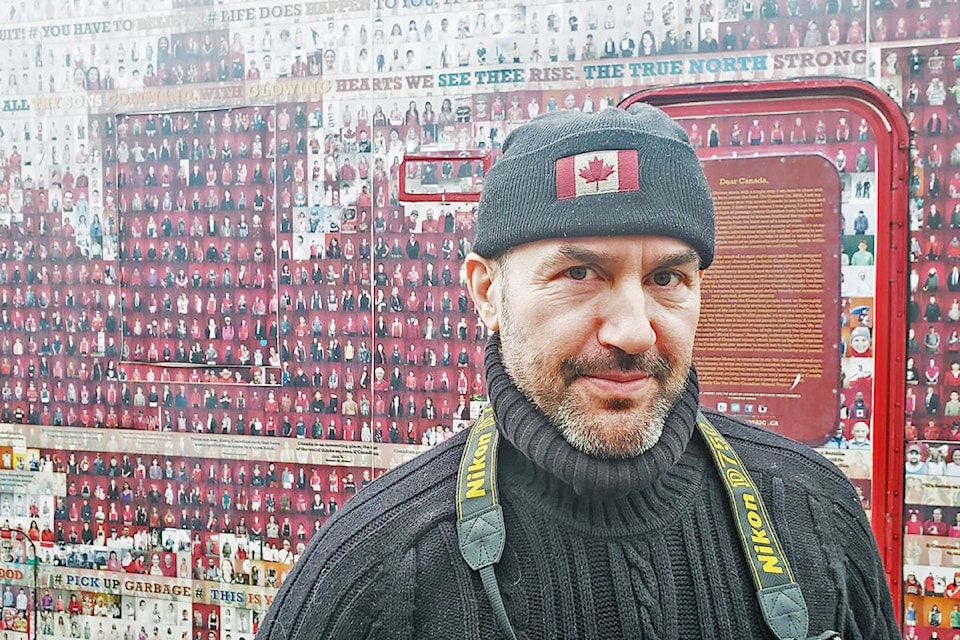A peek inside Tim Van Horn’s motorhome offers insight into his broad world view.
Buddhist symbols and other religious artifacts are the on walls, eastern-styled blankets and pillows adorn the chairs and bed.
Perhaps more striking however, is what one sees from on the outside of Van Horn’s vehicle.
Displayed prominently along all sides of the motorhome is a mosaic of a Canadian flag made up of photos from more than 1,500 communities Van Horn has visited.
READ MORE:
Each portrait taken represents a small part of Van Horn’s broader quest, to tell the story of Canada’s diversity in 100,000 portraits, both written and photographed.
“It’s this modern-day pilgrimage where this man is going out and giving himself to this project and the community, and the community is teaching him and supporting him in his endeavours,” Van Horn said. “I hope I’ll inspire people to feel that sense of community, to talk to that neighbour they’ve lived next to for two years, to extend themselves to somebody new that they don’t know anything about.”
Van Horn, a photographer who has spent 10 years on the road for his Canada Mosaic project, was in Prince Rupert taking photographs of people on the street and listening to their stories. So far he has taken 70,000 photos, each of which will be a part of his book called To Canada With Love.
He said his goal was to truly capture the essence of Canada with this project.
“It’s all the different face types, it’s all the different body types, it’s all the different geographical regions, it’s all the different jerseys we wear, it’s our contemporary cultural identity,” Van Horn said. “So all of a sudden, it wasn’t just all these different people from all these different countries, it was all these different life moments, all these different characters.
“It’s not just a mosaic anymore, it’s a matrix and I’m trying to chase down this visual matrix of life and what it looks like in 2018.”
Van Horn began the project in 2008 in Red Deer, saying he was inspired to begin a project that would explore what life looks like in different communities. He drove with his wife from Red Deer to Ontario in an old GMC Savana cargo van with no insulation and a glass roof, snapping portraits of the people he met along the way.
“It was so cold, it was brutal” Van Horn said. “But it was so beautiful and new.”
Van Horn eventually separated from his wife, but continued the journey to Cape Spear, Canada’s easternmost point. He has since upgraded to the 25-foot motorhome he drives today and has logged approximately 250,000 kilometres zig-zagging his way across the country.
The scope and depth of the project has grown over time. When he first started, Van Horn said he was in a hurry to document as many people as he could in each city, and rushed from city to city, “skimming” his way through communities as a result.
READ MORE:
“I’d come to a place like Prince Rupert for a day just so I could get someone from Rupert and then I’d carry on down the road to the next place,” he said. “Now I’m going into these communities and really getting into the layers and penetrating the different facets of that communities. I’ll spend a week or two in a place like Prince Rupert now.”
Van Horn’s next destination will be Haida Gwaii where he will spend the winter organizing the photos he has gathered and organizing the stories into his book. He will then go back on the road to gather finishing collecting portraits before finishing the book.
It’s been a long time on the road, but he wouldn’t have it any other way.
“I get paid with adventures and that’s a really cool place to be,” he said.
newsroom@thenorthernview.com
Like us on and follow us on



